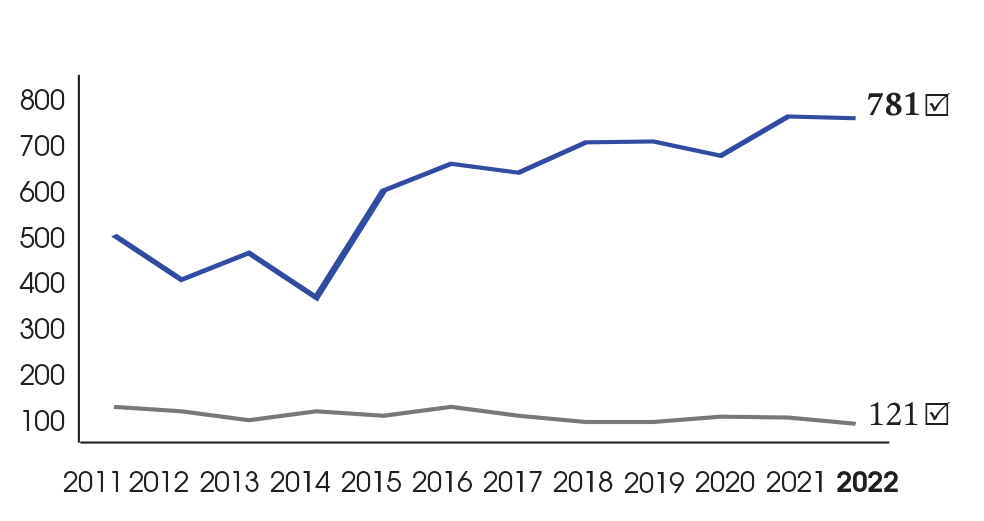B/ Reducing energy consumption and making increased use of renewable energy
Reducing energy consumption
For over 20 years, the Group has been endeavouring to reduce its energy consumption. These efforts focus primarily on two areas: the continuous improvement of industrial processes and the performance of associated equipment; and the optimisation of energy consumption in buildings. In this respect, any new Group building has to comply with the strictest environmental standards.
Furthermore, following the French government’s announcement of the “Energy Sobriety Plan” in June 2022,the Group has committed to reducing energy consumption in France and Europe by 10% compared with 2021 over the next two years.
This commitment is in part based on :
- continuing to reduce the energy consumption at sites operated by the Group, all energy uses combined (heating, air conditioning, compressed air, ventilation, lighting, etc.);
- reducing the heating temperature of working spaces to 19 °C during winter time;
- turning off lights, window display lighting, store screens and signage at closing time;
- launching a global campaign at all sites operated by the Group to reduce the energy footprint of digital technologies; and
- signing RTE’s Eco Watt charter in France.
At industrial sites
The L’Oréal for the Future programme aims to reduce energy consumption in factories and distribution centres by 40% per thousand units of finished product by 2030 compared with 2019.
In 2022, the total energy consumption of the industrial sites was 781,465 megawatt-hours ☑. This was a 4% increase in absolute value compared with 2019.
In 2022, consumption in kilowatt-hours per finished product decreased by 1% compared with 2019 and by 37% compared with 2005.

This diagram shows the total energy consumption of the industrial sites.
From 2005 to 2022: - 37%
From 2019 to 2022: - 1%
L’Oréal pour le Futur - Target 2030 : - 40%
(in kilowatt-hours per 1,000 finished products)

Total energy consumption of industrial sites in kilowatt-hours

This graph shows the total energy consumption of industrial sites in kilowatt-hours.
In millions of kilowatt-hours
2011: approximately 500
2014: approximately 390
2017: approximately 650
2020: approximately 670
2022: 781
In kilowatt-hours per 1,000 finished products
2011: approximately 150
2014: approximately 160
2017: approximately 170
2020: approximately 98
2022: 121
![]() In millions of kilowatt-hours
In millions of kilowatt-hours
![]() in kilowatt-hours per 1,000 finished products
in kilowatt-hours per 1,000 finished products
☑ The Statutory Auditors have expressed reasonable assurance with regard to this indicator.
☑ The Statutory Auditors have expressed reasonable assurance about this indicator.
